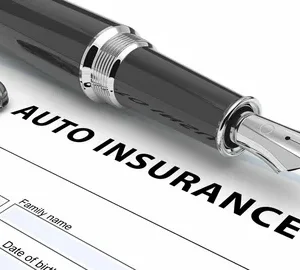In today’s volatile insurance market—where the average full-coverage auto premium climbed to $2,638 in 2025, a 12 percent jump from last year—finding the right agent isn’t just about service, it’s about savings . Captive agents and independent agents each promise value, but which truly helps your wallet? Let’s unpack the differences, crunch the numbers, and show you exactly who saves more in 2025.
Captive Auto Insurance Agents
A captive auto insurance agent works exclusively for a single insurer—think State Farm, Allstate, or Farmers. They’re salaried or commissioned employees whose only products come from their parent company .
Advantages of Captive Agents
- Deep Product Expertise
Captive agents are trained extensively on one company’s policies, discounts, and underwriting guidelines—so they can often uncover every available perk within that carrier’s portfolio (bankrate.com). - Structured Support
Backed by a large brand, captive agents have access to national advertising, claims‐handling resources, and robust training programs (napa-benefits.org). - Bundling Discounts
You can bundle auto with home, renters, or life to unlock carrier-specific multi-policy savings—often up to 17 percent at State Farm or 14 percent average across many insurers . - Loyalty Rewards
Many captives offer loyalty or claims-free discounts—American Family’s loyalty perk can save up to 18 percent, progressive and Allstate likewise reward long-term customers .
Disadvantages of Captive Agents
- Limited Choice
You’re confined to one insurer’s price structure; if that company’s rates spike in your zip code, your agent has no alternative carriers to present . - Potential Conflicts of Interest
Agents may be incentivized to steer you toward higher-commission products or to retain business at the expense of your premium savings (bankrate.com). - Missed Market Opportunities
Captive agents can’t shop niche regional carriers or emerging insurtechs that might undercut the big brands on price or personalized coverage .
Independent Auto Insurance Agents
An independent auto insurance agent represents multiple carriers, from national giants like Progressive to regional specialists in your state .
Advantages of Independent Agents
- Broader Market Access
Independent agents can pull quotes from a dozen or more insurers, tailoring each line of coverage to the carrier with the best rate or policy language for your needs (bankrate.com). - Competitive Bundling
Mixing and matching home and auto across different carriers yields unique bundle incentives—on average, consumers save 7 percent on combined auto/home premiums when working with independent agents, above standard discounts (stantonins.com). - Objective Advocacy
With no single carrier quota to fill, independent agents hold a fiduciary duty to act in your best interest, shopping the market when your renewal comes due (bankrate.com). - Smaller Insurers & Niche Markets
Access to regional carriers can be a game-changer in high-risk areas—some local insurers maintain lower loss ratios and pass savings to policyholders (longengrp.com).
Disadvantages of Independent Agents
- Variable Expertise
While many agents stay informed across all partner carriers, depth of knowledge on every product can vary—so choose an agency with strong credentials and client reviews (bankrate.com). - Less Corporate Backing
Independent agencies may lack large-scale marketing budgets or centralized claims support, though they often compensate with personalized service IIABA directory (bankrate.com). - Potential for Commission Bias
Some carriers pay higher commissions; ethical agents should still present all viable options, but it’s wise to ask how they’re compensated (bankrate.com).
Cost Comparison: Which Saves You More in 2025?
To distill the numbers, let’s compare key savings levers side by side:
| Savings Lever | Captive Agent Typical Range | Independent Agent Typical Range |
|---|---|---|
| Multi-Policy (Auto+Home) | Up to 17 % [State Farm] (compare.com) | Average 7 % on mixed bundles (stantonins.com) |
| Loyalty Discounts | 5 – 18 % [American Family] (clearsurance.com) | Varies by carrier; agent can find best available |
| Good-Driver & Usage-Based | Up to 30 % Drive Safe & Save (statefarm.com) | Same carrier programs available via any agent |
| Base Premium Shopping | N/A (single carrier) | Typically 5 – 10 % by comparing top insurers |
| Regional/Niche Carrier Deals | N/A | Additional 3 – 8 % in certain markets |
Key Insight: While captive agents can unlock deep multi-policy and loyalty perks within one carrier, independent agents provide broader access to base-rate competition and regional discounts—often translating to a total savings potential of 10 – 15 percent off your renewal quote when fully leveraged.
Key Factors to Consider When Choosing an Agent
- Your Risk Profile & Location
Urban drivers facing heavy traffic accidents may benefit more from niche regional carriers offered by independents; low-risk suburban drivers might find top loyalty perks at a national captive. - Desired Coverage Complexity
If you need specialty endorsements (e.g., rideshare, custom equipment), independent agents can bundle across carriers to fit every nuance. - Service & Claims Advocacy
Proximity, personal rapport, and claims support matter—visit agent offices, read client reviews, and ask about their claims response process. - Renewal Strategy
Decide whether you want someone who shops annually (independent) or leverages loyalty tiers over time (captive). A hybrid approach—working with an independent who monitors loyalty programs—can maximize both.
Tips to Maximize Your Savings
- Shop Every Renewal
Even with a captive agent, obtain comparison quotes or ask your agent to refer you to their independent colleagues. - Leverage All Discounts
Good driver, anti-theft, defensive-driving, and even affiliation discounts (up to 20 percent) can stack Insurance.com discounts guide (insurance.com). - Optimize Your Deductible
Raising deductibles can shave premiums—just ensure you have emergency cash to cover higher out-of-pocket costs if you file a claim. - Bundle Judiciously
Compare single-carrier bundles versus mixed-carrier bundles; sometimes the best deal is split between two companies. - Review Annually
Life changes—marriage, moving, adding drivers—can unlock new discounts or shift your ideal carrier landscape.
Conclusion
Choosing between captive and independent auto insurance agents in 2025 ultimately hinges on your priorities: loyalty perks within a single carrier versus broad market competition. Captive agents excel at deep discounts through multi-policy and loyalty programs—often delivering up to 17 percent savings in bundling and 18 percent in loyalty rewards. Independent agents, however, can mix-and-match carriers for an average 7 percent bundle advantage plus an extra 5 – 10 percent by securing the lowest base premiums.
By understanding these dynamics and taking an active shopping approach—leveraging all available discounts, raising deductibles wisely, and reviewing your policy every renewal—you can unlock total savings of 10 – 15 percent or more on your annual premium. In a market where the average driver pays $2,638 for full-coverage insurance in 2025 (bankrate.com), that’s real money back in your pocket.
Ready to save? Reach out to an independent agent for a multi-carrier quote, then compare it against your captive provider’s loyalty offer. Your wallet will thank you.






